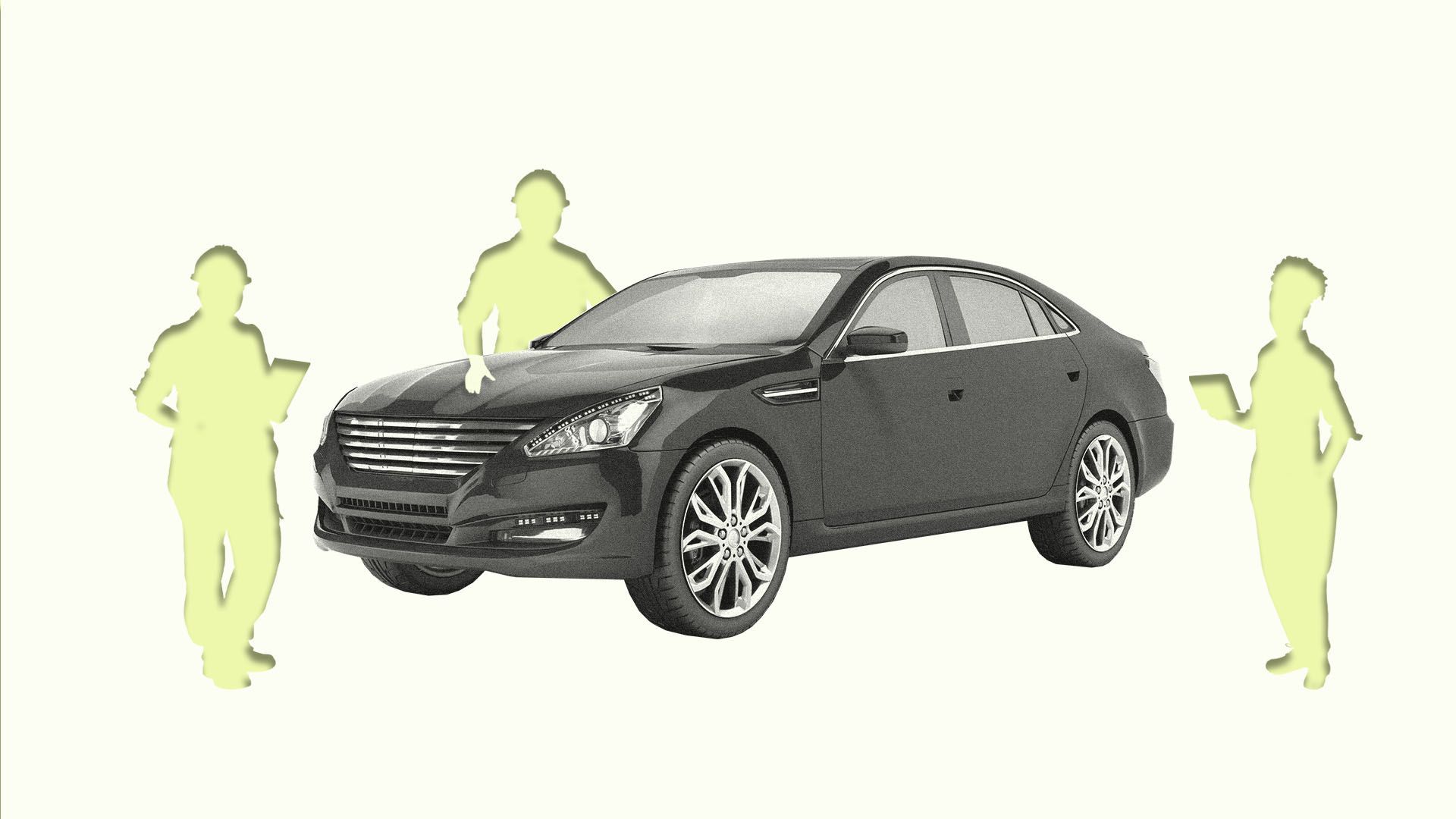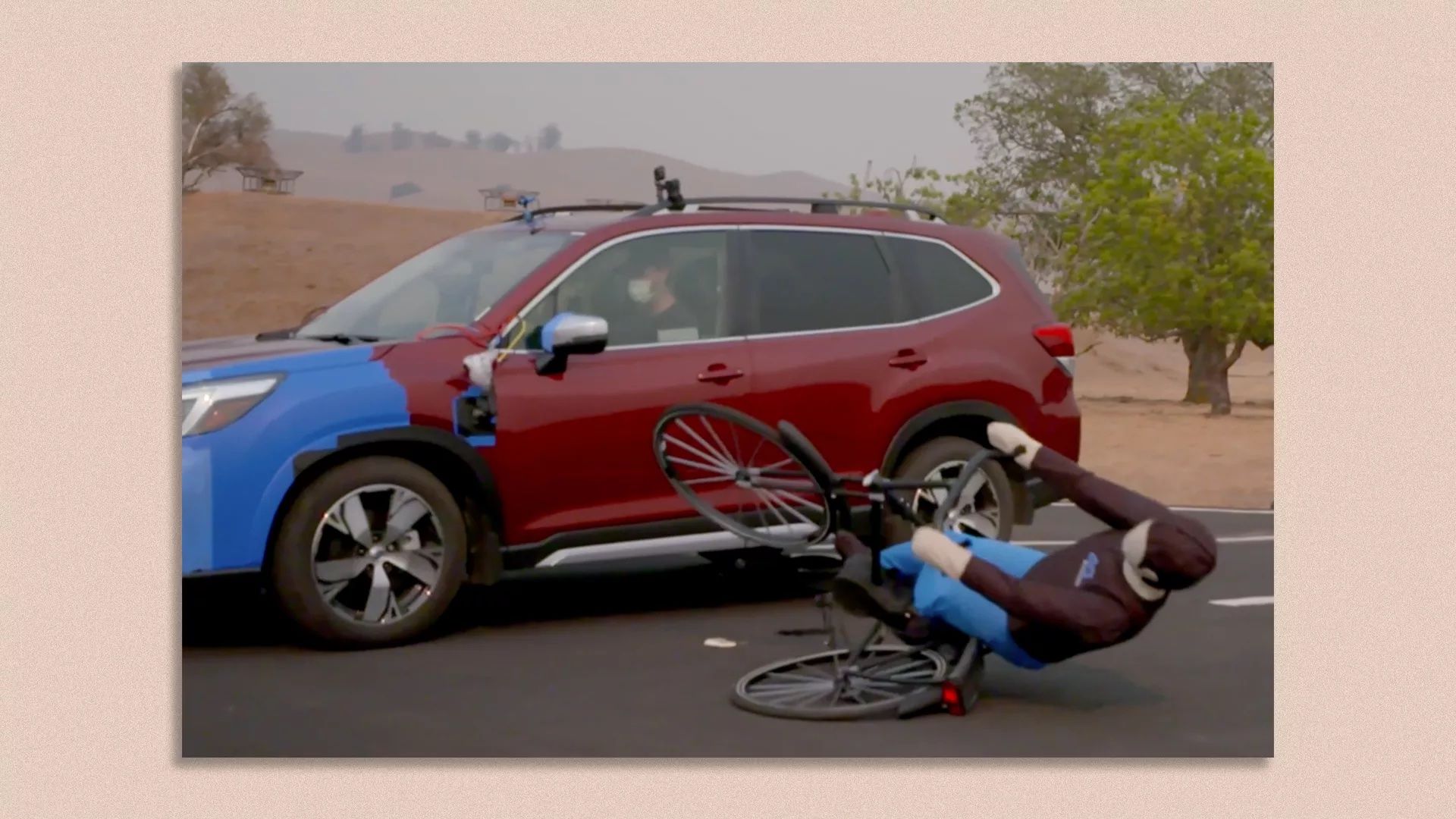| | | | | | | Presented By Deloitte | | | | Axios What's Next | | By Jennifer A. Kingson, Joann Muller and Alex Fitzpatrick · May 18, 2022 | | Would you be comfortable riding in an autonomous vehicle? More are hitting the road in various cities, but there are constraints, as Joann Muller explains. - To be sure: Human drivers are no panacea. The number of U.S. traffic deaths hit a 16-year high in 2021, Axios reports.
- And the driver assistance technologies we use today are far from foolproof, as a report from AAA describes, below.
- What do you think about AVs? Email us at whatsnext@axios.com.
Today's Smart Brevity count: 1,262 words ... 5 minutes. | | | | | | 1 big thing: Why driverless cars can't go everywhere yet |  | | | Illustration: Sarah Grillo/Axios | | | | Self-driving cars are now tooling around in a growing number of cities — even giving rides to the public, in some instances — but it'll be years before summoning a robotaxi is routine, Joann writes. - One big obstacle: Teaching them the rules of the road in each city, which must be done block by block and street by street.
Why it matters: Despite high-profile efforts to get autonomous vehicles on the road, the obstacles — including engineering challenges, capital requirements, regulatory issues and liability questions — are immense, raising questions about how quickly the market can move forward. Driving the news: Argo AI announced Tuesday that it has begun driverless testing operations in Miami and Austin, two of the eight cities in the U.S. and Germany where it is developing its AV technology. - It's an important milestone on the path to commercial deployment for the Ford- and VW-backed company.
- Argo is unique for testing cars simultaneously in multiple cities; most of its rivals are focused on mastering one city at a time.
- Founder and CEO Bryan Salesky says the approach will enable Argo to gather richer data so it can quickly scale AVs into a viable business.
Where it stands: So far, only one company — Waymo — has a commercial robotaxi service that's up and running. - In suburban Phoenix, you can hail a driverless taxi using Waymo's app. But the service is limited to a 50-mile area around Chandler and Tempe — you can't go downtown or to the airport, for example.
Details: Argo's driverless vehicles have operating limitations of their own: - Only employees can ride for now, and the cars are confined to specific streets and neighborhoods.
- If they encounter heavy rain, they'll pull over and stop. The software doesn't allow them to operate in severe weather like snow, dense fog or hail.
Between the lines: AV developers put their own parameters on where and when their cars can operate safely, then they gradually expand those limits — geography, lighting conditions and weather, for example — as the technology improves and regulations allow. The bottom line: A driverless car is a lot like a Roomba vacuum: With regular use, it learns to navigate your entire living room. But to find the dust bunnies in your bedroom, it needs to be trained all over again. Read the full story. |     | | | | | | 2. Assisted-driving systems aren't collision-proof |  | | | Screenshot: AAA | | | | Assisted-driving systems don't perform well enough to consistently avoid collisions, new testing by AAA shows, underscoring why most drivers are skeptical about autonomous vehicles, Joann writes. Why it matters: Although you still can't buy a self-driving car, a growing number of new cars and trucks are equipped with Automated Driver Assistance Systems, or ADAS technology, that helps cars steer, stay in their lane and brake in an emergency. Driving the news: In its third round of ADAS testing, AAA measured how three vehicles equipped with driver-assist technology — a 2020 Tesla Model 3, a 2021 Subaru Forester and a 2021 Hyundai Santa Fe — performed in four collision scenarios using dummy cars and cyclists made of foam. What they found: When faced with an oncoming dummy car at 25 miles per hour, the Hyundai and Subaru didn't slow down, while the Tesla did slow to about 3 miles per hour. But all three collided with the dummy vehicle, AAA said. - The Subaru failed to detect a simulated bicycle rider crossing its path in five test runs, while the Tesla and Hyundai successfully stopped in time to avoid a collision.
- All three tested vehicles avoided hitting slower-moving dummy vehicles and cyclists when approaching from behind.
The other side: Hyundai and Subaru said they are looking into AAA's findings, and Tesla did not respond to a request for comment. The big picture: AAA has been tracking consumer sentiment toward vehicle automation since 2016, and its latest survey found that distrust continues to run high. - 85% of those surveyed said they were fearful or unsure of self-driving technology; a similar percentage said they would not be comfortable using a self-driving vehicle to carry their children or loved ones.
- The survey found drivers want automakers to improve the performance of existing driver support features rather than develop self-driving cars.
Read the rest. |     | | | | | | 3. Where homes will face the most wildfire risk in next 30 years |  Major risk is defined as a 6%-14% risk of a wildfire; Data: First Street Foundation; Chart: Erin Davis/Axios Visuals New research shows climate change will cause a steep increase in the exposure of U.S. properties to wildfire risks during the next 30 years, doubling the risk level in many areas, Andrew Freedman writes in Axios Generate. Why it matters: While broad trends in wildfire risks have become clear, this is the first time probability-based wildfire risk data will be made available to property owners and prospective owners to help them make informed decisions. Driving the news: With wildfires already raging across the West, scientists have shown clear links between human-driven climate change and escalating wildfire intensity, frequency and size. In addition, the seasonal timing of wildfires is shifting in many states, with fires beginning earlier in the spring and lasting later into the fall. Zoom in: The new report and its accompanying tool come from the nonprofit First Street Foundation, known for mapping flood risks. - Its new "Fire Factor" risk score seeks to capture the changing risk profile of individual properties as global warming continues.
- About 80 million properties are at some level of wildfire risk during the next three decades.
- Of these, 20.2 million properties face "moderate" risk, which is defined as having up to a 6% chance of experiencing a wildfire during the next 30 years.
Read the full story. |     | | | | | | A message from Deloitte | | Understand the metaverse | | |  | | | | There are a lot of unknowns when it comes to the metaverse, a three-dimensional, immersive environment where users can interact. Okay, but: Executives shouldn't underestimate the potential now. Learn about the metaverse and how to prepare for it. | | | | | | 4. Food protectionism is on the rise |  Data: Chicago Board of Trade, FactSet; Chart: Simran Parwani/Axios Bread is one of the more crucial foods in maintaining world stability — and it's getting dangerously expensive, Emily Peck writes in Axios Markets. Why it matters: As food prices rise around the world due to the Russia-Ukraine war, extreme weather and inflation, more countries are putting export controls in place — but that only exacerbates the issue. - At least 43 protectionist measures have been implemented since the Russian invasion, according to data cited by the New York Times earlier this month.
- These include restrictions put in place by Russia and its ally, Belarus, along with Indonesia's ban on palm oil exports and China's prohibition on fertilizer exports.
Driving the news: Wheat prices surged to near record-high levels Monday after India said it would ban exports as it deals with an extended, climate-change-driven heat wave. What they're saying: "These measures threaten to further tighten global supplies, and will create price pressure on food as we head further into 2022," says Kelly Goughary, a senior research analyst at Gro Intelligence. - Goughary hasn't seen this level of export controls in her 15 years in the industry.
Read the rest. |     | | | | | | 5. Cats show us — once again — that it's all about them |  | | | Wilson, who was adopted during the pandemic, responds to the news. Photo: Jennifer A. Kingson | | | | In what the Wall Street Journal calls "a new moment for an industry traditionally dominated by dogs," the pet care world is finally seeing a swell in demand for high-end cat care. - "Cat owners are willing to pay for services from daycare to baths and exercise, to social stimulation and even a little time at the spa," the Journal reports.
- "Luxury cat hotels" are springing up to meet demand. (One chain, the Happy Cat Hotel, has three locations and offers franchising opportunities.)
- "Jacque Opp, owner of Pet Agree Mobile Grooming LLC in Bismarck, N.D., is booked 10 weeks out with a waiting list a dozen pages long," the Journal says. "The only certified feline master groomer in North Dakota, Ms. Opp now has 257 clients and stopped accepting new ones about a year ago."
The bottom line: Dogs aren't the only beneficiaries of our pandemic-era adoption enthusiasm. - Now that we've fallen in love with our new pets, there's nothing we won't do for them.
|     | | | | | | A message from Deloitte | | Metaverse: What boards should know | | |  | | | | The metaverse is a growing focus in technology circles — and with good reason. Many consider the metaverse the next generation of the internet. Boards should consider the impact of the metaverse when evaluating their companies' future opportunities, growth and risk factors. Learn more. | | | | Was this email forwarded to you? Get your daily dose of What's Next magic by signing up for our free newsletter here. |  | It's called Smart Brevity®. Over 200 orgs use it — in a tool called Axios HQ — to drive productivity with clearer workplace communications. | | | | | | Axios thanks our partners for supporting our newsletters. If you're interested in advertising, learn more here.
Sponsorship has no influence on editorial content. Axios, 3100 Clarendon Blvd, Suite 1300, Arlington VA 22201 | | | You received this email because you signed up for newsletters from Axios.
Change your preferences or unsubscribe here. | | | Was this email forwarded to you?
Sign up now to get Axios in your inbox. | | | | Follow Axios on social media:    | | | | | |









No comments:
Post a Comment